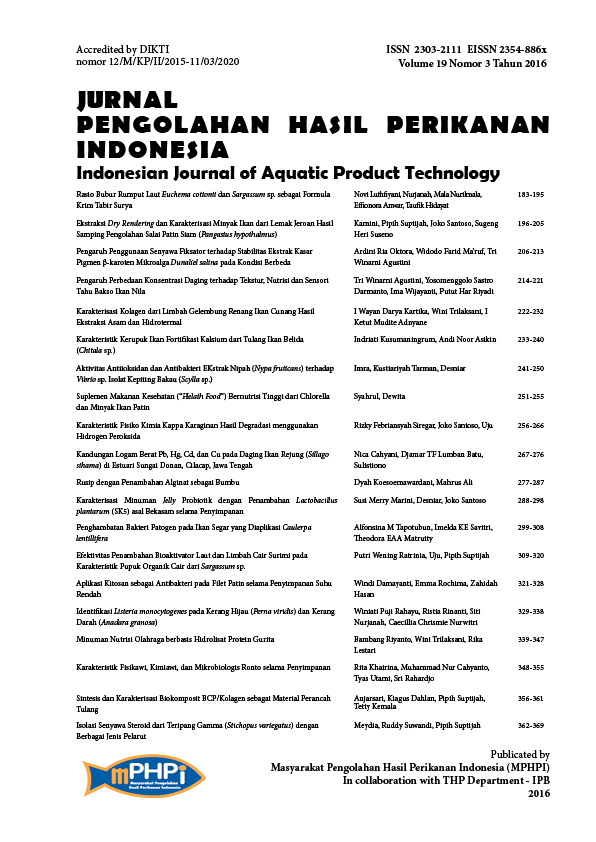Application of Chitosan as Antibacterial for Pangasius Fillet at Low Temperature Storage
Abstract
Abstract
This research were to obtain the optimal concentration of chitosan as an antibacterial material wich had the longest of storage period of pangasius fillet at low temperature storage (5-10oC). The method used is an experimental method with a completely randomized design, four treatments and three replications. Pangasius fillet was soaked with chitosan 0%, 1%, 2% and 3% for 3 minutes, then packed with styrofoam and plastic wrap and stored at low teperature. The observation were made on day 1st, 3rd, 5th, 6th ,7th, 9th,10th, 11th and 12th. The parameters observed total bacterial colonies, the degree of acidity (pH), weight loss, and antibacterial activity of chitosan using disc diffusion methods. The conclusion of research was that the 2% chitosan is optimal concentration for pangasius fillet storage at a low temperature until day 11th, with a total 6.7 X105 cfu/g of bacterial colonies, pH 6.67 and total 6,78 % of weight loss.Chitosan also has a higher antibacterial capability against Escherichia coli (Gram negative bacteria) than Staphylococcus aureus and Bacillus subtilis (Gram positive bacteria).
Authors
Authors who publish with this journal agree to the following terms:
- Authors retain copyright and grant the journal right of first publication with the work simultaneously licensed under a Creative Commons Attribution License that allows others to share the work with an acknowledgement of the work's authorship and initial publication in this journal.
- Authors are able to enter into separate, additional contractual arrangements for the non-exclusive distribution of the journal's published version of the work (e.g., post it to an institutional repository or publish it in a book), with an acknowledgement of its initial publication in this journal.





